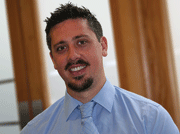Overcoming The Distance
Pharmaceutical Technology Europe
With the Western world recovering slowly from a recession, and tighter restrictions for medical products being applied by the FDA and other regulatory authorities, more medical device R&D is being located in Asia.
With the Western world recovering slowly from a recession, and tighter restrictions for medical products being applied by the FDA and other regulatory authorities, more medical device research and development is being located in Asia. In India especially, there is a growing middle class that can afford more sophisticated medical products. As a result, India’s medical device market has grown from approximately $1.5 billion in 2006 to more than $2.6 billion in 2010. Since the beginning of this development in 2006 and visiting both the manufacturer and client sites during this time, Cambridge Consultants has seen new research and development centres continually being established or acquired in many of the major cities of India.

Mark Berry. Senior Engineer at Cambridge Consultants.
Recently, we worked with India-based Sun Pharma Advanced Research Company (SPARC) on the development of a new dry powder inhaler (DPI). To some organisations, the physical distance between a developer and client can be a major hurdle. Cambridge Consultants is based in the UK, but already has two decades of experience working with clients in the US, which has allowed us to establish systems and procedures that enable the physical distance to work to mutual benefit. For example, differences between time zones can extend an average project working day. In the case of our collaboration with SPARC, this average day was typically around 15 hours, which had a direct influence on the speed at which development took place. Product development, including clinical trials and manufacturing took only five years, and the design programme for this new product is now in the latter stages of scale up into commercial production.
Generics are increasing in popularity, with a large number of these products emanating from India. The DPI we designed with SPARC uses a patented de-agglomeration mechanism that separates the drug from the carrier lactose particles. Its novel design and effective performance should elevate it above generic competition.
The keys to collaboration success
As with any collaboration in a development project, understanding your total project team—both teams at developer and client site—is crucial to success. Throughout the project with SPARC, we employed systems that provided tight control over design processes. At the beginning of the process, we also laid the foundations to help SPARC become more familiar with European Standards and the US Quality System Regulation. We also made use of our company’s document management system, which allows us to share files with clients, whilst retaining certainty on which documents and files are current and active.
Face-to-face meetings with the client to develop a strong working relationship with mutual understanding and respect are also invaluable.
